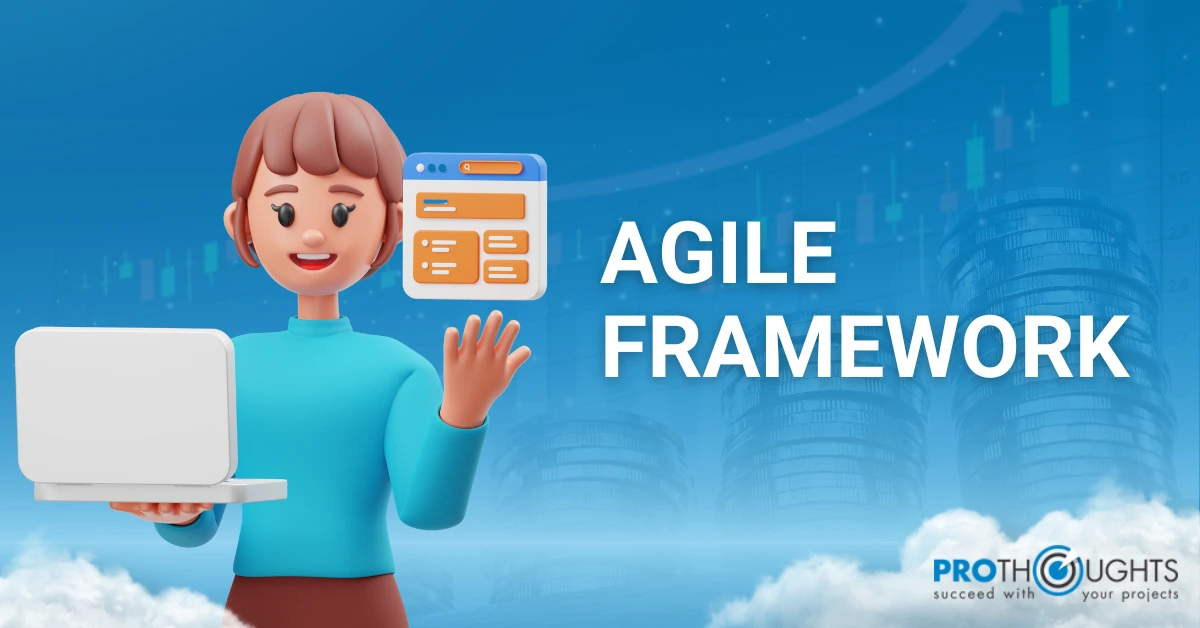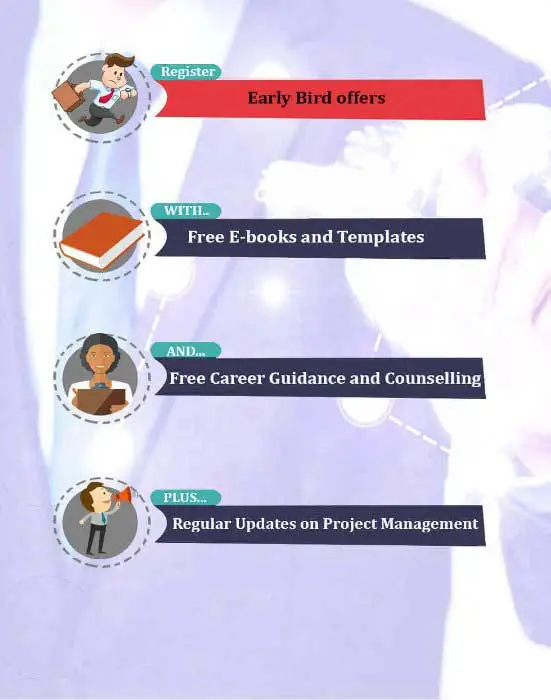Mo
The agile framework is a dynamic and adaptive approach to completing projects or tasks within them. This methodology aims to enhance the efficiency of planning, management, and execution, ultimately leading to successful project completion. These frameworks are divided into two categories: for team use and for wider organizational use. An agile framework’s structure helps the development of high-quality software while meeting deadlines and conserving resources. As planning occurs incrementally throughout the execution phase, this technique enables continuous upgrades. Let us delve deeper into the agile framework, exploring its various aspects and topics to acquire more complete knowledge.
Explain Agile Framework
The agile framework represents an agile approach to application development or project execution. The essence of the agile mindset is the methodical dividing of each project into tasks, each with its own set of resources. This resource allocation is so precise that it continuously delivers on time without sacrificing the end product’s quality. These various methods of task execution represent their respective agile frameworks.
While the overarching Agile concept- centered on customer demands, responsiveness, and short cycles- guides each framework and shares key components, each version operates independently. These frameworks include a variety of approaches, each customized to various team dynamics and contextual conditions, and hence provide distinct benefits.
History of Agile Framework:
Let’s dive deep into the history of the Agile framework. The formal compilation of the Agile manifesto is relatively recent, and the underpinning concepts of Agile methodologies and software development have existed for a considerable duration. For instance, the Scrum framework, officially formulated in 1993, had its roots in development practices as early as 1986. Similarly, rapid action development was used as far back as the early 1980s.
The utilization of iterative and incremental approaches dates back to the late 1950s. However, it was during the 1990s that agile frameworks truly emerged, partly in response to the advancement of personal computing technology.
During this period, the pace of the world’s progression outstripped that of development, resulting in an approximate three-year gap between identifying a business need and producing a viable solution. Consequently, many of the core agile frameworks were initially conceived in the early and mid-1990s,
Exploring Diverse Agile Frameworks
Agile methodologies have revolutionized the way teams approach project management and development. While the core principles of agility remain constant, there exists a multitude of agile frameworks, each with its unique characteristics and applications. As we explore various agile frameworks, we will look into some of the most prominent ones, shedding light on their key features and contexts where they excel.
Scrum-
Recognized as “The Art of Achieving Twice the Work in Half the Time,” Scrum is one of the most seasoned and widely embraced agile frameworks. The term was initially coined in the Harvard Business Review in 1986, and this framework is meticulously crafted to facilitate the development of intricate software and products while ensuring their long-term sustainability. A defining trait of Scrum is its unwavering commitment to delivering completed work at the culmination of each iterative cycle.
- Transparency: Achieved through the use of a universal understood language.
- Inspection: Involves examining products at every stage to guarantee the final products
- Adaptation: Reflects Scrum’s commitment to aligning with changes, even while in the midst of execution.
Extreme Programming (XP)-
Extreme Programming revolves around fostering excellence in work quality and applying optimal engineering practices. Like many other frameworks, XP prioritizes effective communication and collaborative teamwork. However, XP goes further by emphasizing the significance of shared workspaces. Integral elements of this framework include code refactoring and pair programming.
Feature Driven Development (FDD)-
Feature- Development harmoniously blends the advantages of agile methodologies with model-driven strategies, catering to scalability from small development teams to expensive projects. However, FDD delineates its workflow across five stages: development, listing, planning, designing, and building.
Dynamic System Development Method (DSDM)-
The Dynamic Systems Development Method transcends the boundaries of software development teams, extending its influence to encompass broader projects and even entire organizations. Also, DSDM’s scope includes every project facet, from its conceptualization to its ultimate completion. Initially conceived as a development solution addressing rapid action developmental solutions addressing immediate action development challenges, DSDM has evolved into a holistic approach adopted for drive applications.
Adaptive Software Development (ASD)-
Rooted in rapid action development principles, Adaptive Software Development revolves around a laser-focused dedication to end-user experiences for products or software. Moreover, The core tenets of ASD revolve around cultivating continuous development teams. ASD operates within an adaptive lifecycle grounded in three pivotal principles: speculate, collaborate, and learn. Key highlights of this agile methodology include:
- Ensuring timely or even ahead-of-schedule product delivery
- Enhancing transparency between developers and clients.
- Promoting the development of adaptive and intuitive products.
Disciplined Agile (DA)-
Disciplined Agile is a versatile and hybrid toolkit that draws from a wide spectrum of Agile, Lean, and traditional strategies. Its primary objective is to guide teams and organizations in determining the most suitable way of working (WoW) for their unique contexts. Unlike rigidly prescribing a set of “best practices”, DA empowers you to select and adapt a WoW that best aligns with your specific circumstances.
Moreover, DA operates with context sensitivity at its core. It equips you to recognize the intentions and activities pertinent to your team, enabling context-specific decision making. DA encompasses four key perspectives:
- Mindset: Rooted in the foundational principles of agile and lean, DA addresses the practical realities encountered within an enterprise setting.
- People: DA delineates the roles, responsibilities, and team structure essential for success.
- Flow: It educates the dynamic aspects of processes throughout the lifecycle and workflow diagram.
- Practices: DA provides clarity on the techniques that propel your team forward, using goal diagrams that offer a high-level menu of practices to choose from.
The Crystal Method-
Among the array of agile frameworks, the Crystal Method truly embodies the core value of agility. It prioritizes communication and interactions among individuals over strict adherence to processes and tools. Also, teams using this method are adept at identifying and incorporating changes into the final product, recognizing that every project is constantly evolving.
Lean Software Development (LSD)-
This agile framework adopts a proactive approach, focusing on delivering a minimum viable product before a full-scale launch. It actively engages users to gather feedback, discerning their preferences and feature requests. Based on this input, iterative product improvements are made by releasing newer versions. Key features of LSD include rapid functionality addition in a short timeframe and substantial time and effort savings, all while ensuring user acceptance.
Scaled Agile Framework (SAFe)-
SAFe serves both product teams for successful deliveries and development teams in creating a conducive environment for product development. This agile method effectively addresses large organizations’ challenges during software product development. Certainly, SAFe specializes in creating layered solutions for intricate problems, and certifications are available for professionals looking to enhance their careers in scaling agile methodologies.
Kanban-
Kanban, initially a scheduling method, has evolved into a visual means of project management. It aids in tracking progress, breaking tasks into segments, and analyzing outcomes. Kanban is instrumental in identifying issues and waste within a project, effectively reducing waiting times.
Rapid Application Development (RAD)-
True to its name, RAD is an agile framework primarily oriented towards the frequent iteration of software products based on user feedback. It comprises four phases: requirements planning, user design, rapid construction, and cutover. Also, the highlights of this framework include enabling rapid iteration at a low cost and facilitating continuous product enhancement, making it suitable for businesses of various natures.
Choosing the Best Agile Framework
With so many options available, it can indeed be challenging to select the right agile framework for your specific needs. While there’s no universal solution, the key choosing the appropriate framework lies in understanding your objectives and how to achieve them effectively. Agile frameworks serve distinct purposes and are applicable based on several factors, including:
- The structure of your team
- The size of your organization
- The ultimate goals of your product development strategy
- The number of available resources and stakeholders
Every framework comes with its distinct strengths and weaknesses. What might be the perfect fit for another team may not align with your specific needs. Consequently, it’s essential to engage in some experimentation to determine the framework that best suits your requirements. Changing or transitioning between frameworks carries significant risks and could potentially be detrimental to your project development.
Keep learning Various Agile frameworks and their comparisons in ProThoughts previous webinar below.
Benefits of Agile Frameworks
The incorporation of agile methodologies into project delivery brings forth a multitude of benefits. Agile practices offer:
- Enhanced Adaptability: Agile methodologies promote adaptability, simplifying the management of changes and the optimization of work environments. This flexibility allows teams to navigate evolving requirements effectively.
- Deliverables of High Quality: By emphasizing quality throughout the development process, agile approaches consistently yield high-quality end products. This commitment to quality results in meeting deadlines and optimizing resource utilization.
- Continuous Testing: Agile’s dedication to ongoing testing and validation ensures software quality. Agile guarantees that teams possess a comprehensive grasp of the entire process, enabling them to make well-informed decisions at each phase. This practice minimizes defects and enhances the overall reliability of the delivered solution.
- Early Error identification: Agile methodologies excel in early error identification and risk mitigation. This proactive approach significantly reduces the likelihood of project failure and contributes to heightened customer satisfaction.
Thus, leveraging Agile knowledge can aid organizations and teams in maximizing the advantages of agile frameworks, making informed decisions, and optimizing project delivery.
The Reasons Behind Adopting Disciplined Agile:
Organizations and teams choose to embrace PMI’s most-sought Disciplined Agile(DA) for several compelling reasons:
- Scalability: DA offers scalability, accommodating projects of varying sizes and complexities. Whether it’s a small team or large enterprise, DA provides a flexible framework to align with diverse needs.
- Holistic Approaches: DA takes a comprehensive view of the entire organization, addressing not only development but also aspects like business, architecture, and operations. This holistic approach fosters alignment across various functions.
- Lean Integration: DA effectively integrates lean principles into its framework, emphasizing efficiency, continuous improvement, and waste reduction, in harmony with the lean project management philosophy.
- Practical Implementation: DA offers practical guidance on implementing agile practices, providing clear steps, roles, and life cycles to follow. This practically simplifies the adoption of DA in real-world scenarios.
These factors collectively make DA an appealing choice for those seeking effective and adaptable agile methodologies.
You can read more about Discipline Agile on ProThoughts. It gives you a complete overview of DA, the certifications in it, and how it helps you.
Conclusion
In conclusion, No single framework can magically solve every problem. The initial crucial step involves identifying the actual problem at hand, drawing inspiration from various frameworks to address it. Typically, it’s impractical to directly and fully implement a framework within an organization. Instead, the starting point should involve embracing the guidance provided by the framework and gradually adapting and evolving its components to fit your specific context.
Certainly, Agile frameworks serve as valuable starting points for teams, projects and organization. Each framework has its advantages and disadvantages, and selecting the most suitable one for your team depends on several factors, including team size , organizational structure, available resources, and customer requirements. While the fundamental principles and values of agility are applicable to all teams, it’s important to note that agile frameworks are not universally applicable; they are specific. Thus, it might be necessary to engage in some experimentation to discover the framework that best aligns with your unique needs.



